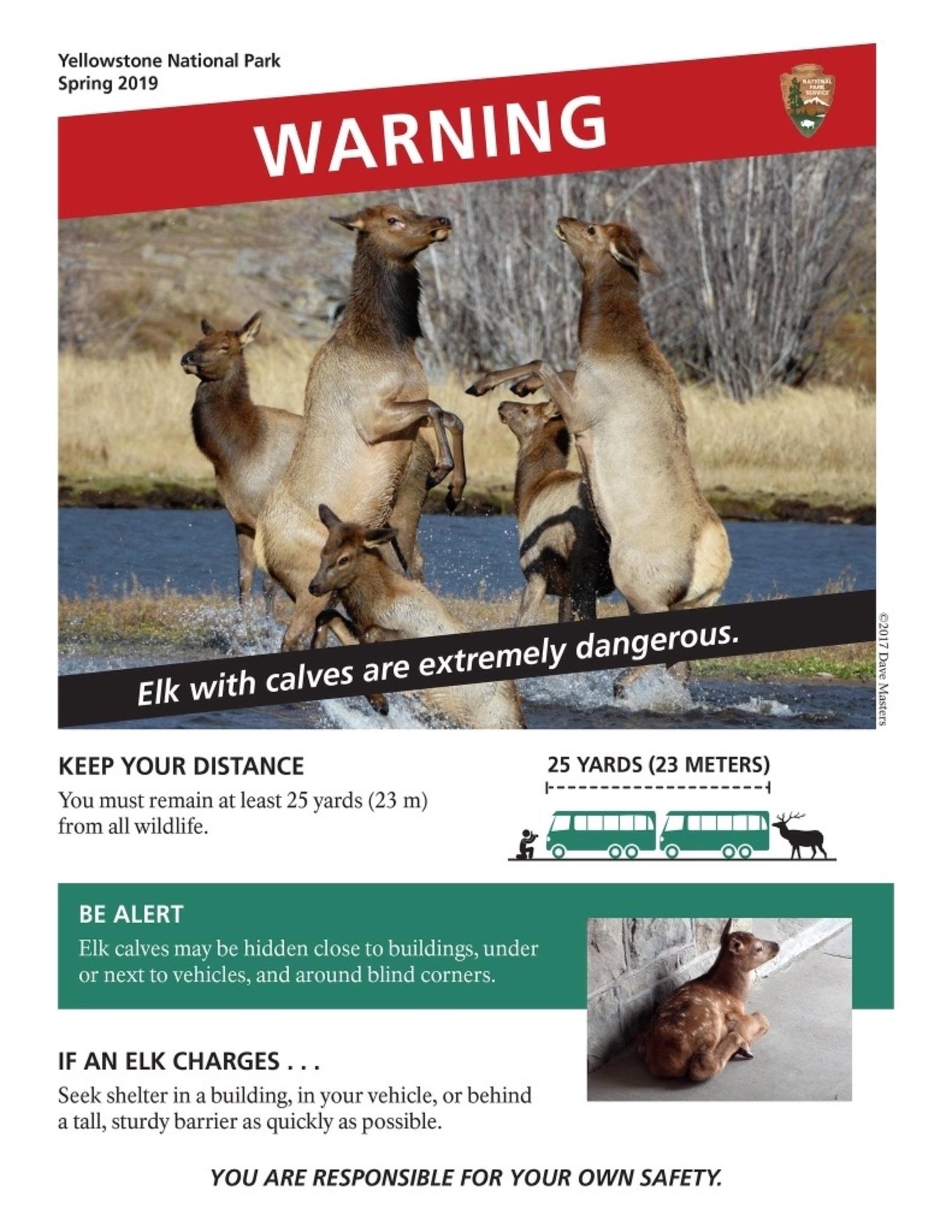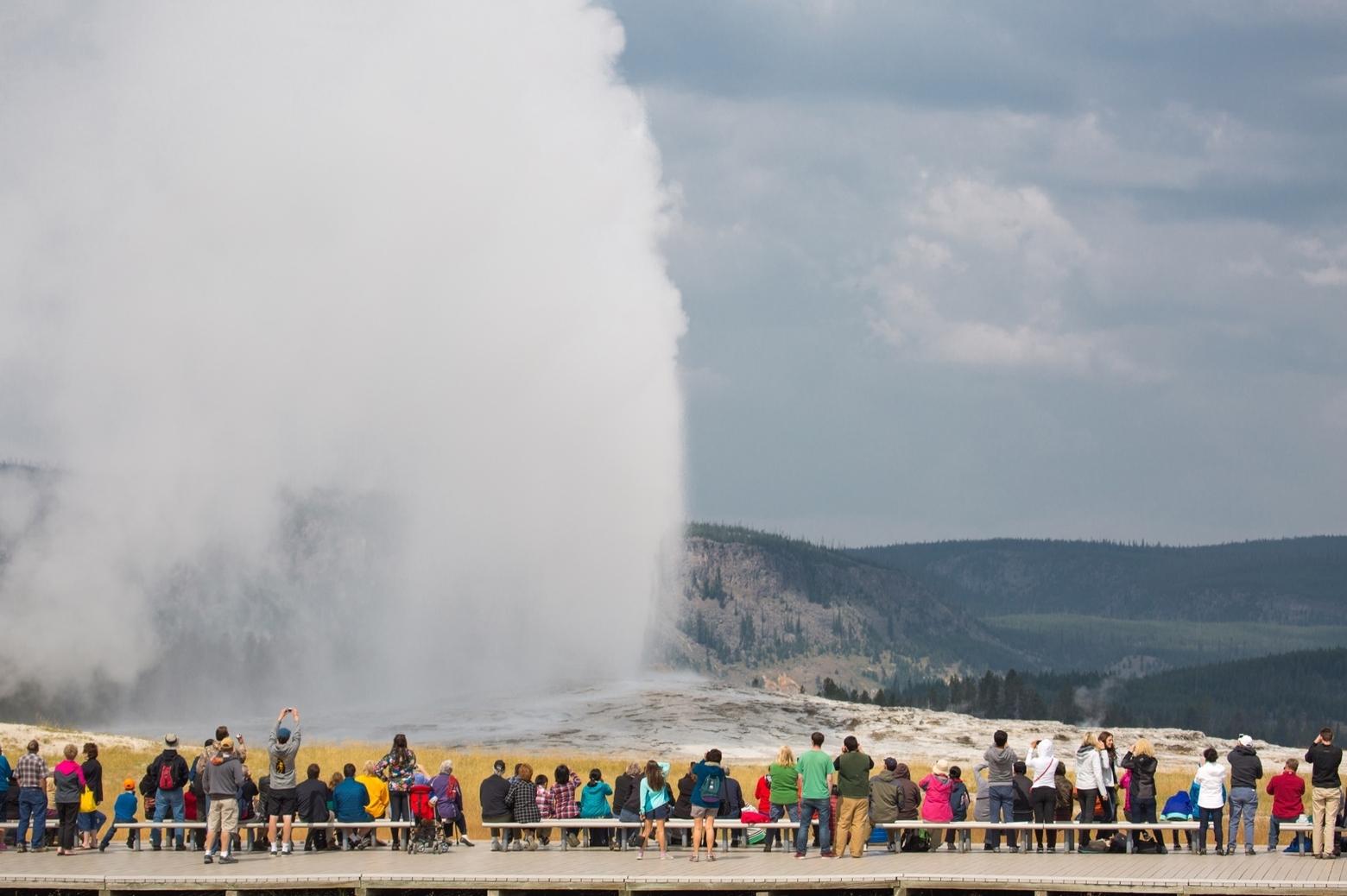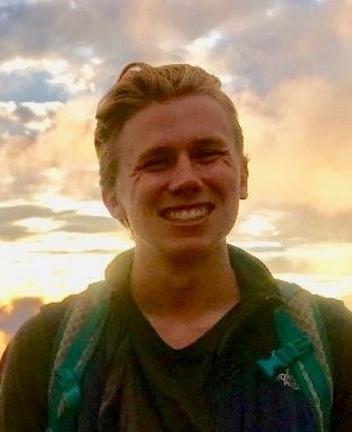Back to StoriesSocial Media: Harnessing The Digital Human Ecosystem To Protect Nature
August 7, 2019
Social Media: Harnessing The Digital Human Ecosystem To Protect NatureMoJo summer intern Jordan Payne explores the multiple ways, for good and bad, that social media is affecting the way we interface with the wild outdoors
Social media, it is said, has sped up the pace of the world, "democratized" free speech, spawned "flash mob" public gatherings for righteous causes, and created new ways of engaging not only in commerce but community discussion and advocacy.
Many say the conservation movement is rearing to catch up but what's the impact on the things activists are trying to protect?
With the rise of virtual social platforms, the ease with which one can reach a large audience has dramatically increased. This advancement has led to the proliferation of non-traditional grassroots organizations, from political campaigns to neighborhood groups, and the government, too, is communicating in ways it didn't at the dawn of this new millennium.
Literally, you no longer have to travel across the country to visit Yellowstone in order to “experience” it; you can watch Old Faithful Geyser erupt on a webcam, learn how to empty a can of bear spray into a charging grizzly and even hear the sounds of the park via cell phone. Whether that’s good or bad is left for another story to explore.
But regarding social media in general, one could argue that although conservation groups may be late to the game, a healthy social media presence is a key component of many if not most organizations. And whether we like it or not, it is the future of the activist movement. While social media does possess the potential of reaching millions and helping concern about emerging issues "go viral," does the environment movement have greater or lesser impact politically and in convincing citizens to voice their support?
While social media does possess the potential of reaching millions and helping concern about emerging issues "go viral," does the environment movement have greater or lesser impact politically and in convincing citizens to voice their support?
The boom in social media has also coincided with what some call the “gold rush” of outdoor recreation, as more people than ever are visiting and using many of our public lands. Some of those places are custom-made to handle large crowds; others are fragile and under strain. Among another question left to a different story is where virtual reality can expose tens of millions of additional people to wild lands impact free and whether having a virtual digital encounter can translate into a new generation of wildlife advocates and public land defenders.
Regardless, by reaching out to new young recreators like me via social media platforms, land management agencies and conservation groups are hoping to convert fresh faces into becoming enlightened land stewards and conservationists.
In an increasingly urban and diverse America, will the next generations consider making a summer trip to Yellowstone an essential cultural pilgrimage?
In an increasingly urban and diverse America, will the next generations consider making a summer trip to Yellowstone an essential cultural pilgrimage?
Yellowstone and the National Park Service are at the forefront of turning conservation into everybody’s business. No longer does the profile of our crown jewels resonate only with a fairly narrow demography; now they are being made more visually accessible to larger swath of Americans who are awakening to the fact these lands actually belong to them and that they have as much of a reason to visit them as anyone else.
Yes, social media, I believe, can be a transformational force.
With over four million annual visitors, and a combined almost three million followers across Facebook, Instagram, and Twitter, Yellowstone has one of the largest audiences of any conservation-related destination. And those in charge are making use of it. They are not only inviting people to visit the park but to realize Yellowstone is a special place that requires a special respectful conduct of personal behavior.
Something called "The Yellowstone Pledge" is at the forefront of these efforts. A voluntary commitment the park suggests its visitors take, you can find the pledge in most captions the park posts and in social feeds ranging from well-known photographers like Chris Burkard and Josh Packer to everyday visitors.
By “taking the pledge,” visitors promise they will “protect Yellowstone National Park.” They continue by pledging they “will act responsibly and safely, set a good example for others, and share [their] love of the park and all the things that make it special.” The pledge has ten components including “Stay 100 yards from bears and wolves. Stay 25 yards from all other animals” and “leave what you find.”
In a conversation I had with Jake Frank, a talented park photographer and Yellowstone’s social media specialist, he shed light on the origins of the pledge. According to Frank, the idea is nothing new. The pledge follows basic principles like Leave No Trace and encourages visitors to be responsible for their actions while in the park. He sees it as “a way to spin bad park behavior” and an inclusive way to create standards for visitors in the park, turning the average park-goer into a stewardof Yellowstone.
Some 99 percent of Yellowstone visitors do not stray farther than a mile from the road, leading to crowded but contained front-country destinations. It’s the largely uninvaded backountry that explains the reason why wildlife, which need plenty of space to exist free of of people, are able to thrive for much of the year in Yellowstone.
At social media hotspots such as the Grand Prismatic thermal pool, visitors in search of a better shot created an illegally-blazed trail that the park was forced to close due to the erosion it caused before later codifying it as an official trail. Franks notes this is not new - nor exclusive to social media - as this is how the first boardwalk routes were created fifty or sixty years ago, following footpaths around the pools. The lesson: people will go wherever they want unless you tell them where they are allowed and where they aren’t.
Another problem, which I explored in an earlier story, is “geotagging” which involves revealing exactly where a photograph was taken based upon its easily retrieved Global Positioning System coordinates that are attached to most images taken with digital cameras.
In attempts to limit the creation of further trails and their related damage, and byfollowing the same standards that led the Jackson Hole Travel and Tourism Board to initiate their “Tag Responsibly” campaign, Frank himself does not tag specific locations when posting photos on the park’s social media.
If fewer of the destinations within Yellowstone were roadside attractions, he believes the park would have a more formal policy on geotagging. Glacier National Park, he added, encourages visitors to not geotag backcountry sites.
Frank said that thanks to initiatives like Find Your Park and the Yellowstone Pledge, visitors take personal offense when they see others engaging in harmful activity as they feel that this is their park and feel an obligation to protect it. They are able to record wrongdoings and send it to the park, which is then able to take the appropriate actions. Social media can cause problems as well.
Frank said that thanks to initiatives like Find Your Park and the Yellowstone Pledge, visitors take personal offense when they see others engaging in harmful activity as they feel that this is their park and feel an obligation to protect it. They are able to record wrongdoings and send it to the park, which is then able to take the appropriate actions. Social media can cause problems as well.
When Mountain Journal founder Todd Wilkinson interviewed Yellowstone Superintendent Cam Sholly, Sholly made the downsides to initiatives like Find Your Park quite clear. “We heavily marketed U.S. national parks globally leading up to the Centennial. We grew our visitation from 280 million to 330 million in five years,” Sholly said. But, parks like Yellowstone, Grand Teton, Yosemite and Grand Canyon with already high visitation were not prepared for the influx of visitors the campaign would bring. That is where the Yellowstone Pledge comes in. With so many visitors, it is difficult for rangers to interact with everyone, and so social media is an effective tool to for the park to educate and engage a larger number of visitors.
Social media is all about engagement; just ask Beth Saboe. Saboe is the new Senior External Relations Manager at the American Prairie Reserve (APR). The aim of APR is to establish a reserve encompassing roughly three million acres (bigger than Yellowstone) but it is located far off the beaten path of summer tourists and the likelihood that it will be dealing with swarming crowding issues is as remote as APR is itself.
Social media, Saboe believes, can help put APR on the map and by doing so towns like Lewistown, Montana might accrue more benefits of nature-based tourism that APR is promoting along with its goal of re-establishing an unprecedented place for native prairie species to roam.
In her first year, Saboe has taken to expanding the social side of the organization and sees creating a position solely focusing on media content as a high priority. Right now, APR’s social media serves to educate the public on the mission of the reserve and to secure donors in order to purchase additional land, a tool they have found enormously successful.
When asked about incorporating something like the Yellowstone Pledge into their social media, Saboe was all-in. Once you get to the reserve you are more or less on your own, so creating guidelines to encourage responsible tourism would “keep every visitor aware of what they need to do to be a steward of the land.” As land management and conservation organizations turn to social media as a tool, they increasingly use similar strategies. She figures social media is the best way to get the word out about the APR.
Kate Sollitt from the Jackson Hole Travel and Tourism Board is ready for other places to emulate what’s happening in her bustling town. “Jackson Hole is known as a conservation leader,and as we identified a growing problem and the impact that geotagging and increased traffic was having on our fragile ecosystem, we decided to take action.”
This came in the form of the previously-mentioned Tag Responsiblecampaign, a part of a larger Keep Jackson Wild campaign which functions in a similar manner to the Yellowstone Pledge. A key aspect of the campaign is the social component. With the Tag Responsibly, Keep Jackson Hole Wild geotag, the campaign not only targets visitors but the followers of those who use the tag in order to promote responsible tourism.
Sun Valley features many similar draws to Jackson Hole, but Ray Gadd from Visit Sun Valley noted that they are “fortunate to only see compression in the greater Sun Valley a few weeks out of the year around the 4th of July and Christmas.” That said, Gadd was quick to note that tourism to the valley is growing, though Sun Valley, a historic winter ski destination, doesn’t have any of the wildlife-watching assets abundant in Greater Yellowstone. It is seeking to establish itself as a summer mecca for outdoor recreation.
Concerned with assuring this growth occurs in a sustainable manner, Visit Sun Valley looks to Jackson and their initiatives to plan their future. He highlighted the Tag Responsibly campaign as a standard and an inspiration. As such, Visit Sun Valley only uses geotags “for locations that [they] know can handle the traffic and are easily identifiable,” and Gadd would “definitely implement a similar program” like the Keep Wild campaign.
The Keep Wild campaign has spread to include other mountain towns in the region, with Bend, Steamboat, Tahoe, and Bozeman all recently adopting it. This adoption comes from recognition that these places are all experiencing the issues related to overtourism. The Keep Wild campaign is about creating a grassroots, bottom up style of promoting responsible tourism, and proceeds from each local campaign go towards local conservation groups. For Keep Bozeman Wild, the Gallatin Valley Land Trust (GVLT) was chosen as the beneficiary of the funds raised by the campaign.
EJ Porth sat down with me to talk through what her organization is doing to promote responsible recreation and her thoughts on the conservation movement at present. The GVLT operates over 80 miles of trails in and around Gallatin County alongside a healthy conservation easement program, working with farmers and ranchers to stop future development and encourage responsible agricultural usage.
Their most ambitious project connects Bozeman’s downtown to the mountains and public lands to the north and the south via a trail system called Mountains to Main street. As such, the users of the trails tend to trend local, as Bozeman residents use the trails both to commute and as everyday hiking and biking opportunities. This gives the GVLT the rather unique experience of having a captive audience and a different set of issues to deal with. But at the end of the day, the issues they face are the same: how to promote responsible recreation and create a land use ethic.
Porth mentioned a lot of the same things that Frank did, and when I mentioned so, she was relieved. Speaking for the conservation movement at large, she told me, “Our message will be stronger if we are all promoting the same things. There is no better way to inspire people to get outdoors.”
Social media plays a role in large issues within the conservation movement. Just look at the over-success of the Find your Park initiative or any Facebook post about climate change and the aggressive, inaccurate comments that accompany it. This new way to communicate has not done favors for nuance or politeness, but it does make discourse open and available.
The APR deals with pushback and misinformation from a vocal minority of land owners, and Saboe is able to set the record straight using social media, responding to criticism and contesting inaccuracies. “You can never stop talking about [stewardship]” Porth said. Social media allows groups like the Jackson Hole Travel and Tourism Board and Yellowstone to turn their singular voices into millions, creating an ongoing and long-lasting conversation.
Tourism has its issues and downsides, becoming increasingly recognized. In the Mountain West we are aware of many of them, but tourism also brings in enormous revenue and allows for membership groups, like the land trust, to preserve more of the wild places that make this area so special. But let’s be clear, it isn’t always tourists that are to blame.
“The people who break the rules here live here,” Porth says. Oftentimes locals are the ones who have not changed their behavior, she told me, letting dogs off-leash where they aren’t allowed and biking on trails too early in the season or blazing new unauthorized paths. When newcomers see that behavior, they emulate it in an attempt to fit in with what they see as the social norms.
Social media is an effective way to change those social norms, allow peers to call out wrongdoers, and create a community of stewards. And for Frank, it is a way to continue the dialogue around conservation practices and reach into millions of homes around the world.
Things are changing. The creation and expansion of both the Yellowstone Pledge and the Keep Wild campaign are indicative of the creation of an inclusive “in-group” of recreators that promote responsible behavior and share knowledge. From local hiking group forums that suggest users steer clear of trails that are still muddy in late spring, to letters to the editor praising trail etiquette in local newspapers, Porth is seeing a new level of community involvement in stewardship that begins in social media but extends into the way people behave and interact on public lands.
The power to create permanent change inside people lies within the values they hold for the land, and with the jump in outdoor recreation tourism, Frank sees the everyday visitor as an indispensable steward. The cultivation of that responsible ethic can and increasingly does begin online. But, Porth is quick to admit, we still have a long way to go. Will social media continue to help us get there?





